|
JAPANESE PRINTS
A MILLION QUESTIONS
TWO MILLION MYSTERIES
Ukiyo-e Prints浮世絵版画 |
|
Port Townsend, Washington |
|
Katsukawa Shuntei |
||
| 勝川春亭 | ||
| かつかわしゅんてい | ||
| 1770-1820 | ||
|
Egara no Heita (荏柄平太 or えがらのへいた) slaying Uwabami (蟒 or うわばみ) |
||
| An uwabami is a python or boa constrictor | ||
| Date: 1805-7 | ||
| Publisher: Itō-ya Yohei | ||
| 伊藤屋与兵衛 | ||
| いうとやょへえ | ||
| Print Size: 14 3/8" x 9 3/4" | ||
| Condition: Somewhat faded, soiling, trimmed, unbacked with several restored worm holes | ||
|
$480.00 SOLD! |
|
|
||||||||||
|
THE STUFF OF MYTHS |
||
|
|
||
|
In the Minneapolis Institute of Arts is a magnificent bronze sculpture by Lord Leighton called "An Athlete Wrestling with a Python." Despite its possible homoerotic overtones - a personal opinion - it is a heroic image - another personal opinion. A great, lithe man in a life and death combat against a dauntingly powerful beast. Created in 1877 one critic stated that the man's musculature was excessive - unrealistic - while Leighton referred to his model "...a man of splendid physique...": a true action hero.
But Leighton was hardly the first to use the idealized male in battle nor to apply it to an unrealistically face off with an frighteningly overgrown reptile. In 1506 a large sculptor was excavated from a vineyard near Rome. It represents the destruction of the Trojan priest Laocoon (ラオコオン) and his sons by a humongous sea serpent. Laocoon has warned the Trojans not to accept the Greek gift of a large wooden horse. For this he is punished by one of the partisan gods. The sculpture gives form to lines from Virgil's Aeneid (Book II). Below is John Dryden's translation accompanied by a doctored version of William Blake's (ウイリアム・ブレイク) print of the sculpture: |
||
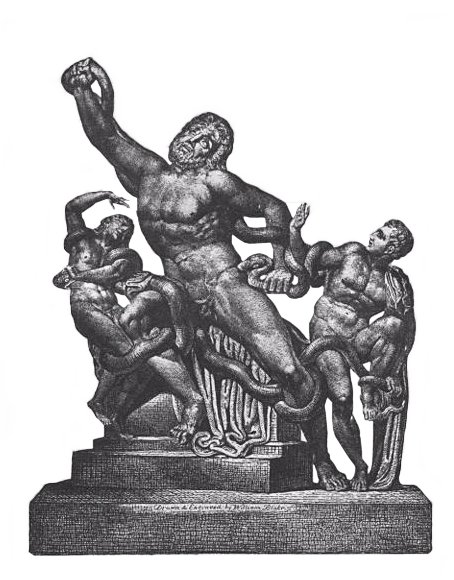 |
||
|
And first around the tender boys they wind, Then with their sharpen'd fangs their limbs and bodies grind. The wretched father, running to their aid With pious haste, but vain, they next invade; Twice round his waist their winding volumes roll'd; And twice about his gasping throat they fold. The priest thus doubly chok'd, their crests divide, And tow'ring o'er his head in triumph ride. With both his hands he labors at the knots; His holy fillets the blue venom blots; His roaring fills the flitting air around. |
||
| THE UGLY-MALE-DEITY-OF-THE-REED-PLAIN | ||
|
In the Kojiki
"When the snakes are about to bite, drive them away by waving this scarf three times," He did as he was told, and the snakes became calm of their own accord. Thus, he slept peacefully and came forth [unharmed]..."
While there is no life-death struggle with a gigantic monster this is the first reference to snakes which I could find in Japanese literature and the significance is unmistakable. |
||
|
Egara no Heita was a military figure of the Kamakura period (1185-1333). He was famed for his skills at archery and was killed in battle in 1213 at the age of thirty-one. The print on this page is said to illustrate an actual event which took place in June 1207. While on a hunt with Minamoto no Yoriie Egara no Heita slew a huge snake deep in a mountain cave. His exploits are portrayed in Noh theater.
Another
version: "...the second Kamakura shōgun, Minamoto no Yoriie 源頼家 (1182–1204),
sent his retainer Wada no Heida Tanenaga 和田平太胤長 [1183-1213] to explore a
'great cave' in a place called Two days later the shōgun sent another hero on a different quest, but we will deal with that elsewhere.
Quoted from the introduction to the Tale of the Fuji Cave, a translation by R. Keller Kimbrough, published in the Japanese Journal of Religious Studies from 2006.
In Kimbrough's translation of the Tale of the Fuji Cave Wada no Heida Tanenaga is sent by Yoriie on the 3rd day of the 4th month of 1201 to find the cave which no one has ever seen. Tanenaga accepts the mission, says goodbye to his family and sets out alone. "He carried a gilded fan together with a one-foot six-inch sword mounted with silver clasps. His other sword was adorned with copper-gold alloy fittings and a hardened leather guard. With the two blades at his side and a porter bearing a bundle of sixteen torches, he declared, “I’ll be back in a week,” and entered the Fuji cave. ... Some hundred yards into the cave Heida came upon a mass of striped snakes with mouths as red as if they had been daubed with paint. The scene was terrifying to behold." He made another 500 yards into the cave and then "He came to a place where a fishy stench wafted through the air, frightening beyond measure. Pressing further on, Heida saw a young woman, seventeen or eighteen years old. Dressed in twelve-layered robes and a long crimson trouser-skirt, she bore the thirty-two marks of perfect feminine beauty. Her locks were as delicate as the wings of a cicada, as richly hued as flowing ink. Perched at the foot of a silver loom, she wove with a golden shuttle. 'Who are you to visit my abode?' she asked in the voice of a heavenly bird [i.e., the kalavinka or in Japanese the karyōbinga 迦陵頻伽]." She told him to leave or she would kill him instantly even though he had told her who he was and who he was serving. She didn't care and said: "You are eighteen years old this year,” the woman said. “In the spring of your thirty-first year, you’ll be killed fighting Izumi no Kosaburō Chikahira of Shinano Province. Now leave here at once!” Reluctantly he departed and left the mission for another hero soon to follow. |
|
"The 'uwabami', Python, the name of fabulously large snakes that people the wilderness of the countryside, has given birth to many stories. Once there was an uwabami, so big that it was capable of devouring rider and horse in one swallow. After it had done so for a long time, Egara Heida killed it." (Quoted from: The Animal in Far Eastern Art... by T. Volker, p. 146)
"An unusual large snake, called yamakagachi, or, more colloquially, uwabami, and also ja, which means dragon, hides in the mountains and in water. It is rarely seen, and when one is caught, it is displayed for money." (Quoted from: Kaempfer's Japan: Tokugawa Culture Observed, p. 73)
An uwabami, in Japanese slang, can also mean a person who drinks a lot.
"The peasants of certain thickly wooded districts also harbour an inveterate belief in the existence of a kind of boa, which they call uwabami, and circumstantial accounts of swallowing alive of some child or woman by one of these monsters appear from time to time in the vernacular press. (Quote from: Things Japanese: Being Notes on Various Subjects Connected with Japan by Basil Hall Chamberlain, p. 527)
Typical scene by Toyokuni I of a woman warrior being devoured by an uwabami.
One form of Chinese gives 蚺蛇 as uwabami. |
|
There is a dearth of information about Egara no Heita in English. That is why I was so pleased to run across another reference to him in a catalogue of Katsukawa prints in the Art Institute of Chicago. Although he is not portrayed there he is dealt with as a major character in an 18th century kabuki play. Like so many other Japanese heroes his actions are not what people in the West would view as absolutely heroic. Below is a synopsis of the material they provide.
"The Wada Conflict is based on historical events of the power struggle between the Hōjō and Wada families for control of the Kamakura shogunal government in the early years of the thirteenth century, after the death of the first Kamakura shogun, Minamoto no Yoritomo (1147-1199)." Egara no Heita is sent by both families to bid for the hand of the daughter of the new shogun, Princess Itsuki. His efforts are rebuked and although he is truly attracted to her "...he murders her in an access of rage and makes his escape."
Although this has nothing to do with Egara no Heita's struggle with the snake at least it adds to the lore. Originally written for the puppet theater in 1736 "The Wada Conflict" was adapted to the kabuki stage in 1777.
Source and quotes: The Actor's Image: Print Makers of the Katsukawa School, Timothy Clark, Osamu Ueda and Donald Jenkins, Princeton University Press, 1994, p. 240.
Samuel Leiter notes that Chikamatsu Monzaemon wrote a puppet play in 1692 called Egara no Heita. This evolved in time into the related Wada Kassen Onna Maizuru (和田合戦女舞鶴 or わだかっせんおんなまいづる) discussed above. Professor Leiter's description of the puppet play differs considerably from that of the kabuki play described above.
In this version Princess Itsuki is the shogun's younger sister. She is in love with a nobleman. Confined to the house of Anse Fujisawa she is used as a pawn to provoke into full conflict the rivalry of the Wada and Hōjō clans. That way Fujisawa can eliminate his enemies and then kill the shogun himself and take over control of the government. Egara no Heita, a loyal retainer of the shogun, kills a maidservant in Fujisawa's household and claims that the victim is actually Princess Itsuki whom he has secreted away dressed as a maid." The play continues from there, but mainly without our hero although his actions set many other events in action including the ritual suicide of his own father.
Source: New Kabuki Encyclopedia: A Revised Adaptation of kabuki jiten, Samuel L. Leiter, Greenwood Press, 1997, p. 685. |
|
There are three obans and one triptych by Kuniyoshi listed in a volume by B. W. Robinson dealing with this theme. Egara no Heita was the son of Wada (和田) Yoshinaga. The uwabami was plaguing the province of Settsu. Heida came to their rescue and slew the snake. |
||
|
|
||
|
|
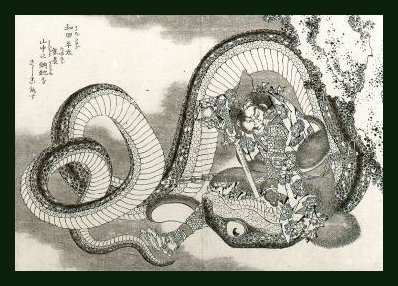 |
On the left is a detail of Hokusai's version of this same theme of Wada Heida slaying the giant snake.* *There are numerous variations on the spelling of our hero's name. It can be very confusing. |
|
|
||||
|
Publisher's Seal: Itou-ya Yohei |
| DO YOU EVER WONDER WHAT THE REST OF THE TRIPTYCH LOOKS LIKE? WELL... |
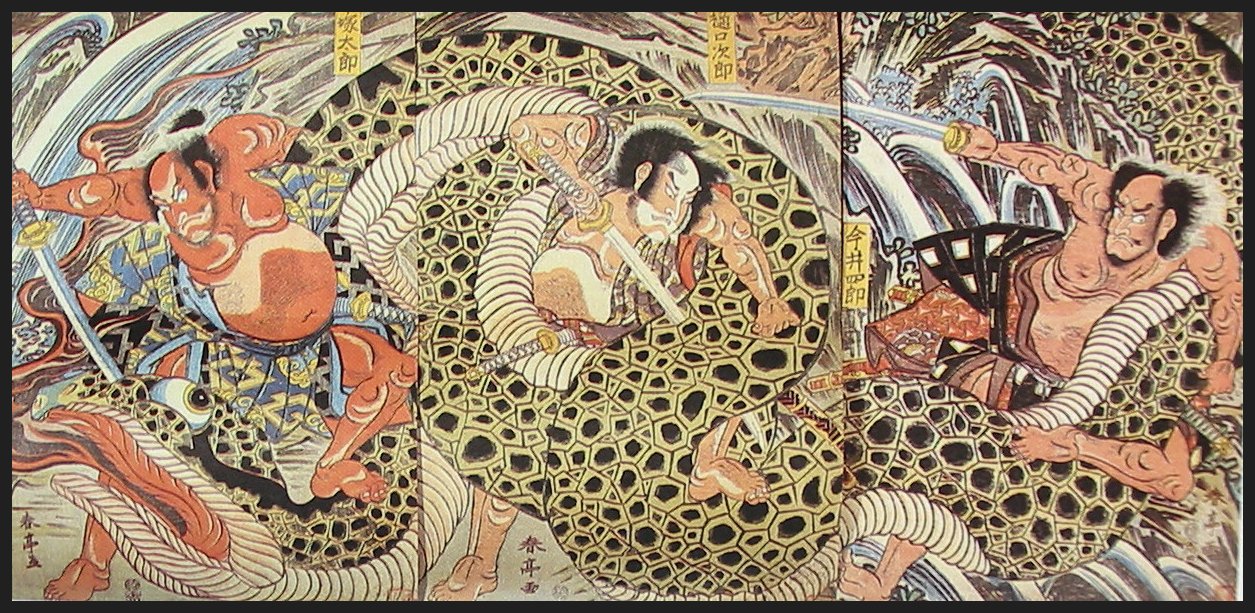 |
| THE ABOVE TRIPTYCH IS NOT FOR SALE! IT IS ONLY PROVIDED FOR YOUR APPRECIATION AND UNDERSTANDING. IT IS NOT AVAILABLE UNDER ANY CIRCUMSTANCES!!!! |

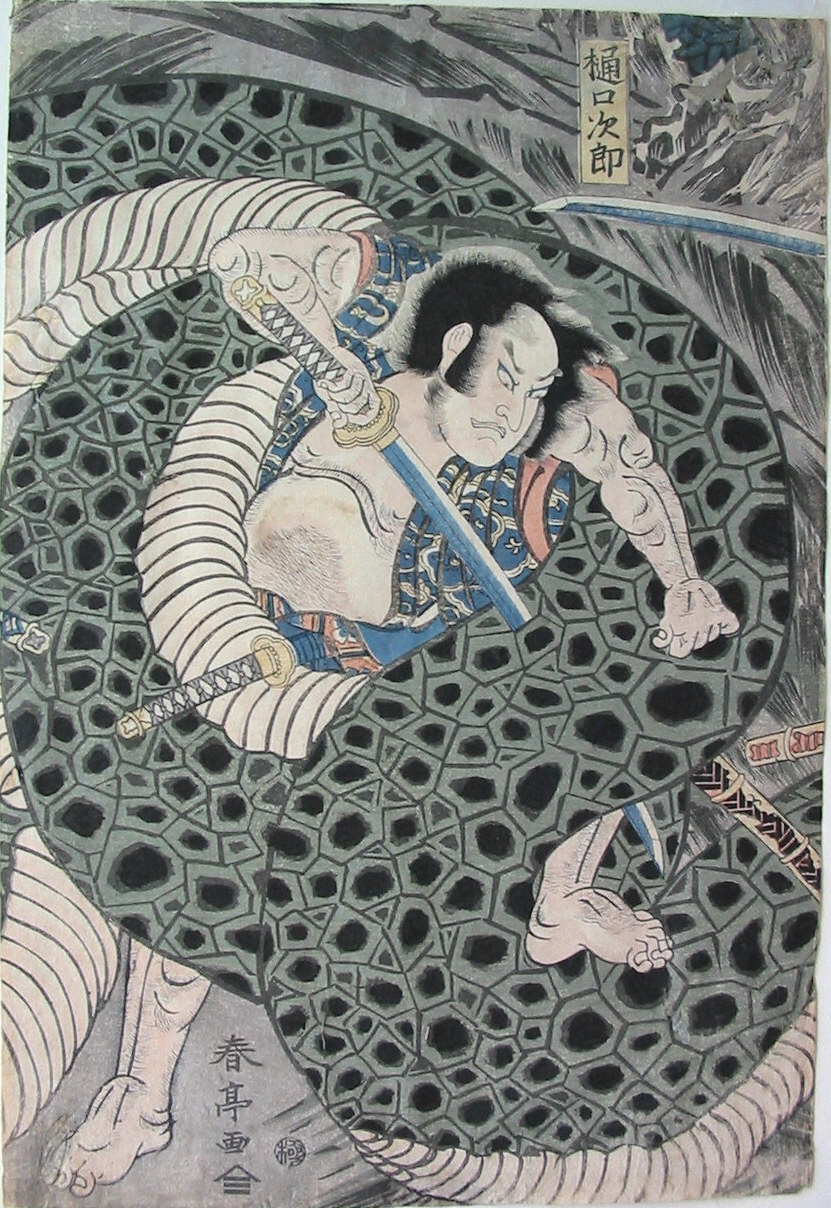
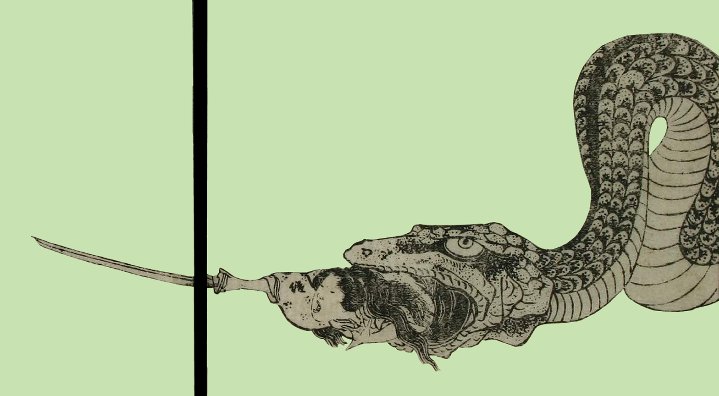
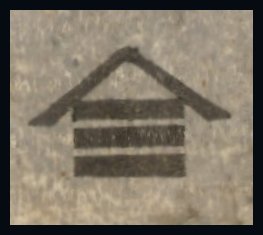
 HOME
HOME